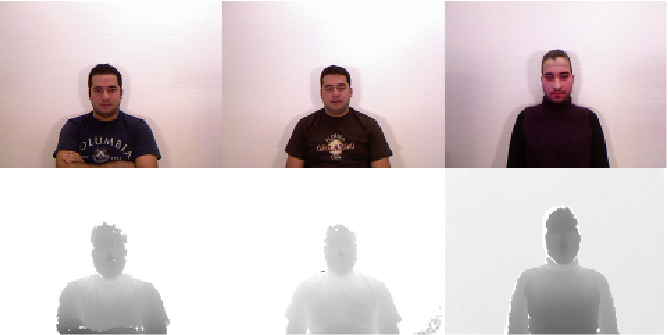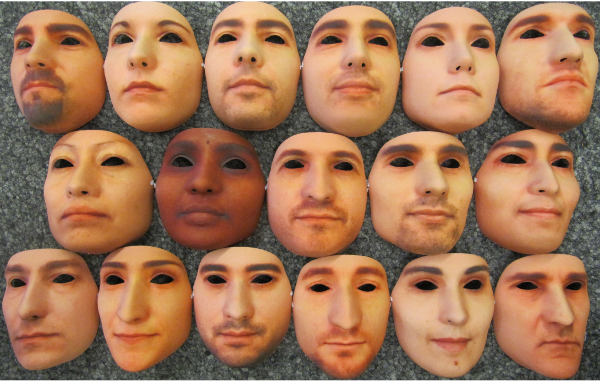3DMAD
The 3D Mask Attack Database (3DMAD) is a biometric (face) spoofing database. It contains 76500 frames of 17 persons, recorded using Kinect for both real-access and spoofing attacks. Each frame consists of:
-
a depth image (640x480 pixels – 1x11 bits)
-
the corresponding RGB image (640x480 pixels – 3x8 bits)
-
manually annotated eye positions (with respect to the RGB image).
The data is collected in 3 different sessions for all subjects and for each session 5 videos of 300 frames are captured. The recordings are done under controlled conditions, with frontal-view and neutral expression. The first two sessions are dedicated to the real access samples, in which subjects are recorded with a time delay of ~2 weeks between the acquisitions. In the third session, 3D mask attacks are captured by a single operator (attacker).

Sample frames from three different session for a subject
In each video, the eye-positions are manually labelled for every 1st, 61st, 121st, 181st, 241st and 300th frames and they are linearly interpolated for the rest.
The real-size masks are obtained using "ThatsMyFace.com". The database additionally contains the face images used to generate these masks (1 frontal and 2 profiles) and paper-cut masks that are also produced by the same service and using the same images.

17 facial masks obtained from ThatsMyFace.com
The satellite package which contains the Bob accessor methods to use this database directly from Python, with the certified protocols, is available in two different distribution formats:
-
You can download it from PyPI, or
-
You can download it in its source form from its git repository.
Acknowledgments
If you use this database, please cite the following publication:
Nesli Erdogmus and Sébastien Marcel, "Spoofing in 2D Face Recognition with 3D Masks and Anti-spoofing with Kinect", Biometrics: Theory, Applications and Systems, 2013.
10.1109/BTAS.2013.6712688
https://publications.idiap.ch/index.php/publications/show/2657
Please contact us for any additional information.